Submitted Review
Tony Clark ‘Nilotic’
‘it still manages to take us on a rich historical, cross-cultural and blended journey’.
To e-visit Tony Clark’s current show Nilotic online, the method most shows are sent as previews nowadays, we are re-introduced to Clark’s mysterious paintings. A body of work continuing to capture theatrical design musings, stage setting proposals or diorama concepts, presented as snippets of fictional landscapes. Recent travel challenges have meant this series was created here in Australia, rather than at his based in rural Sicily, but like much of Clark’s work it still manages to take us on a rich historical, cross-cultural and blended journey. This time the theme placing us in Ancient Egypt, borrowing inspiration from the Nile River.
If we then progress beyond our screens and pay Clark his deserved respect to actually visit the show in real-time, looking, standing directly in front of the paintings we might ask ourselves is there something to decode before appreciating this new series of Clark’s? Yet we don’t need to feel this pressure to unravel meanings or narratives, as the paintings – sometimes disguised as tiles – open viewers up and then suck us in to have our own emotional response. That’s the beauty of Clark’s work, his visual storytelling beckons us to see whatever we like, be intrigued and respond accordingly to his multiple visual cues. Maybe it’s Egypt, but equally it could reference other aspects of art history or even just a variety of representations from different cultures.
With Nilotic Landscapes 1 and 2, he might even have tonally distracted his journey beyond the Nile via his second home in Southern Italy. As the delicate, pink pastel-hues can’t help but whet our appetite to gloriously sweet cassata, and the enviable acqua-blue of the mediterranean. As always with Clark we see that reduced and devoted colour palette. Conversely these tall vertically proportioned and moody landscapes also appear as a homage to ancient asian silk scrolls, and a romanticised depiction of a vaporised world. Clark’s decision to then directly mount the un-stretched canvas to the wall, continues that blur of boundaries between fine arts, decorative textiles and a backdrop.
For the largest piece in the show – two metres square, a much larger scale than usual – Nilotic Landscape (Buehnenbild) continues as a piece of an intriguing drama. Guarded by Bastet, the ancient Egyptian goddess hovering as though the usher in the side panel. If we look deeper into the background, we see depictions of a mountain peak or a mammoth pyramid or an African Savannah, an infinite landscape for something that doesn’t yet exist.
A piece that sits snug, installed and directly embedded within Darlinghurst’s own version of exotic leafiness, is a smaller square tiled piece. Perhaps a momentary insight behind the choreography of a scene change by a rambunctious stage crew. This time anonymous green faceless figures, stylistically cameoing straight out of a Neo Rauch painting.
Don’t you think faced with the real life harrowing scenes of today, it’s noticeably refreshing to get lost in Clark’s endless dreamy scenes of the unknown?
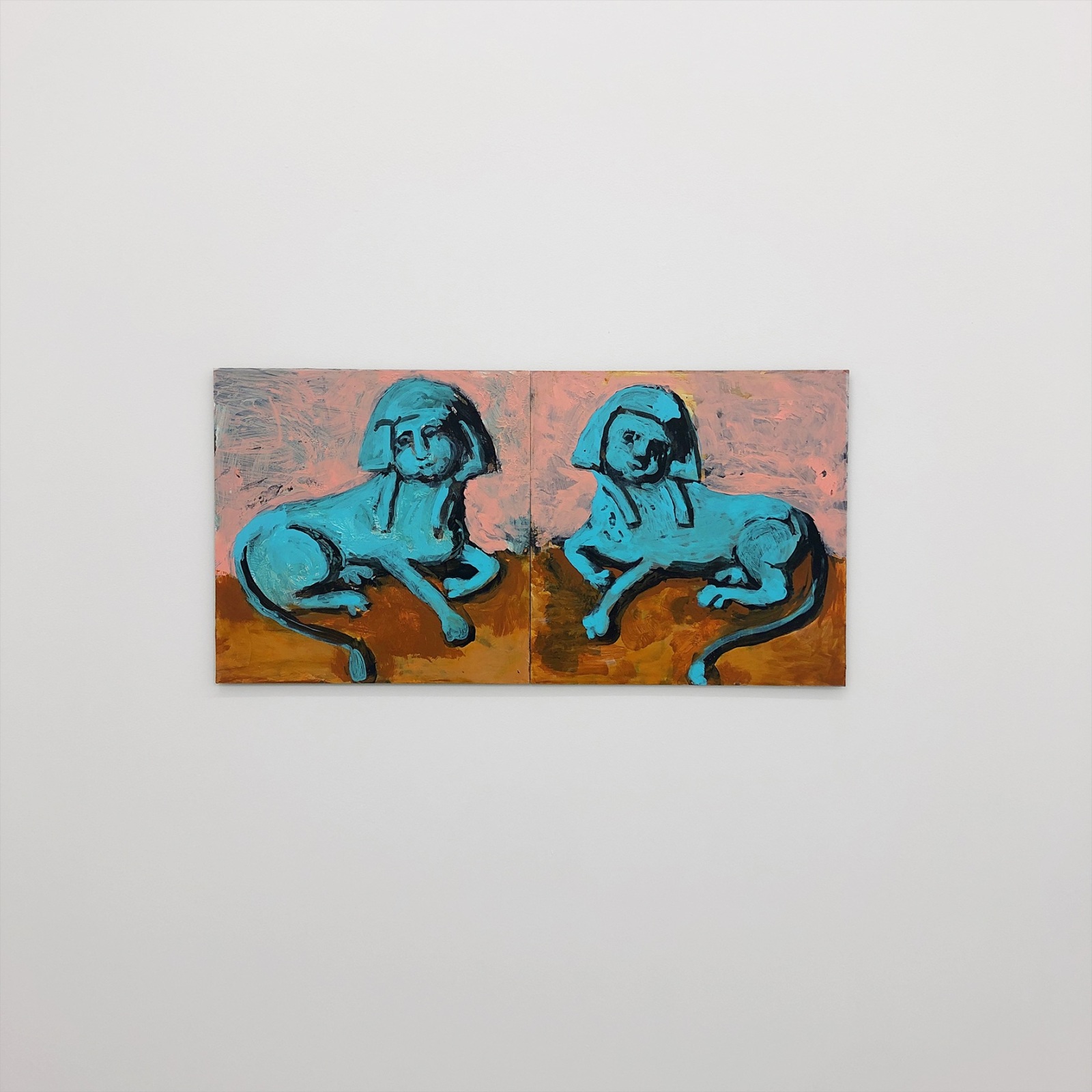
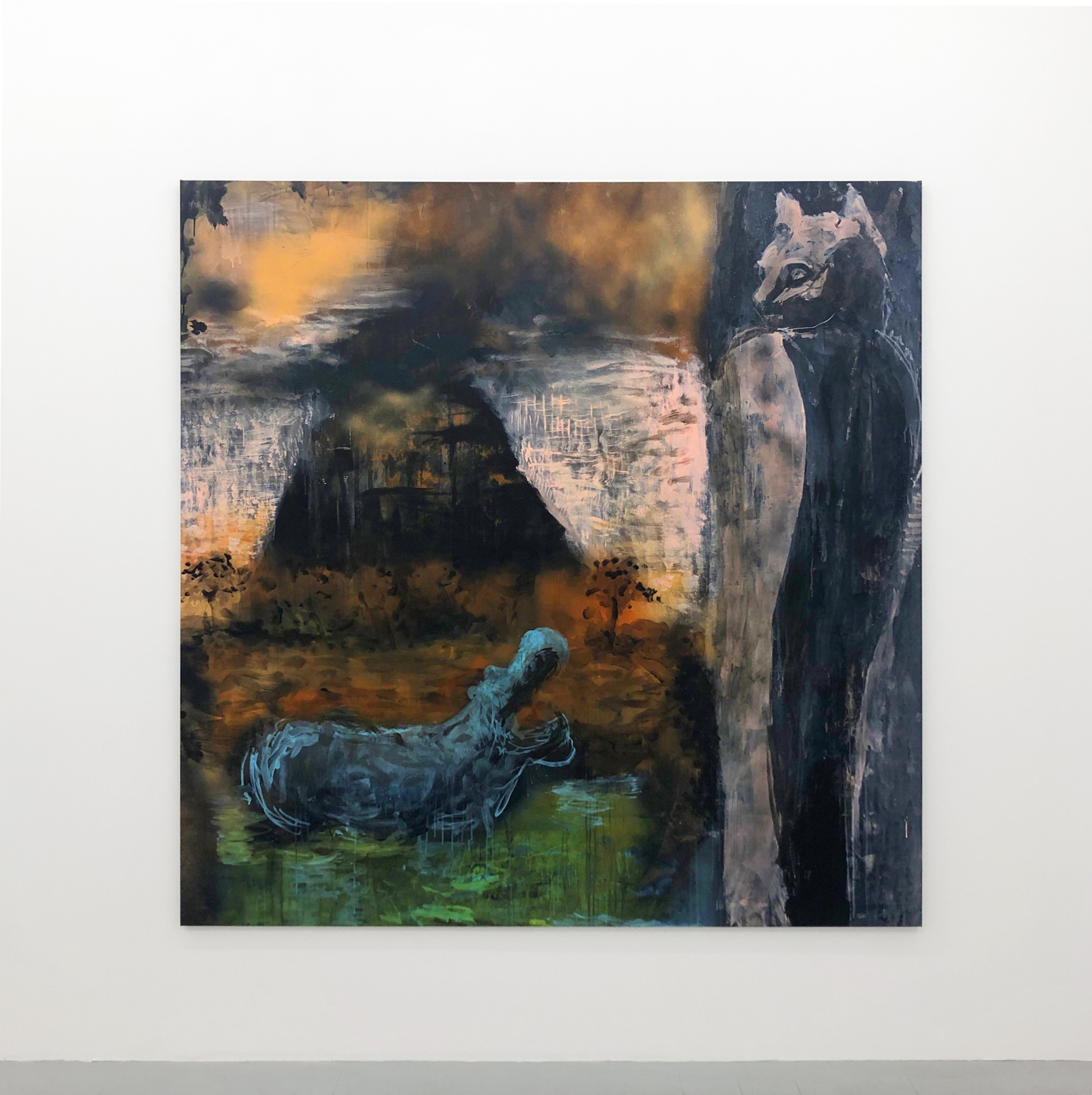
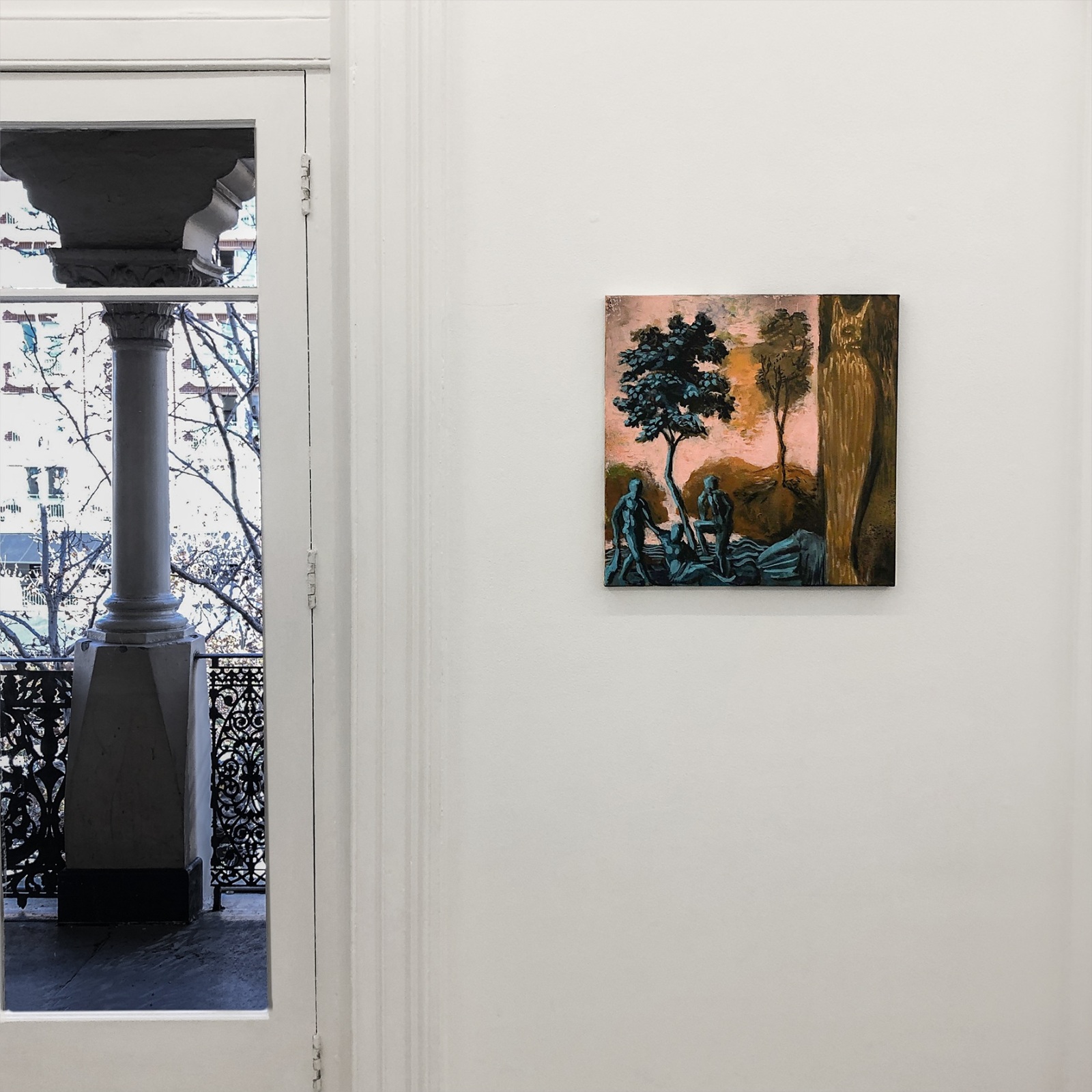
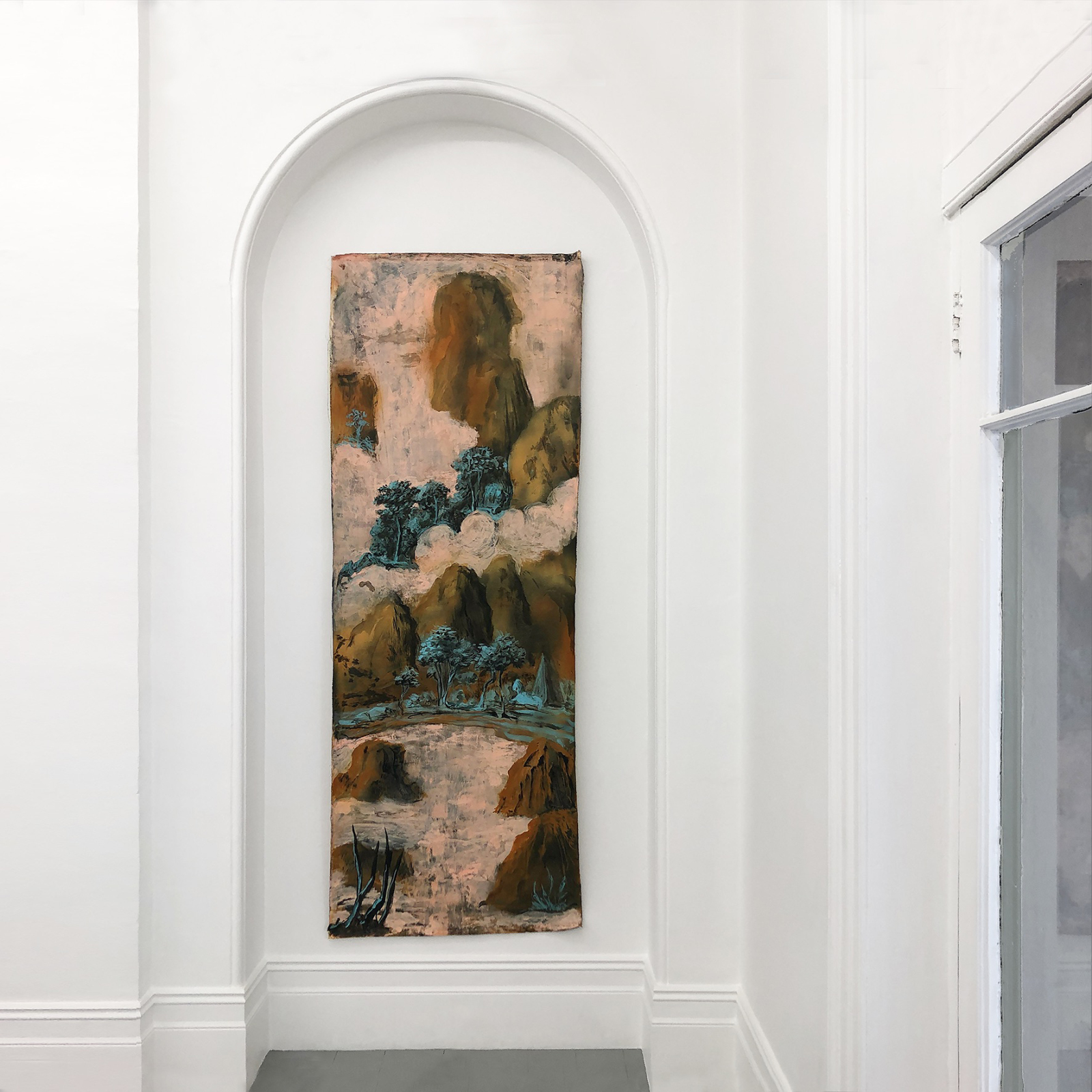
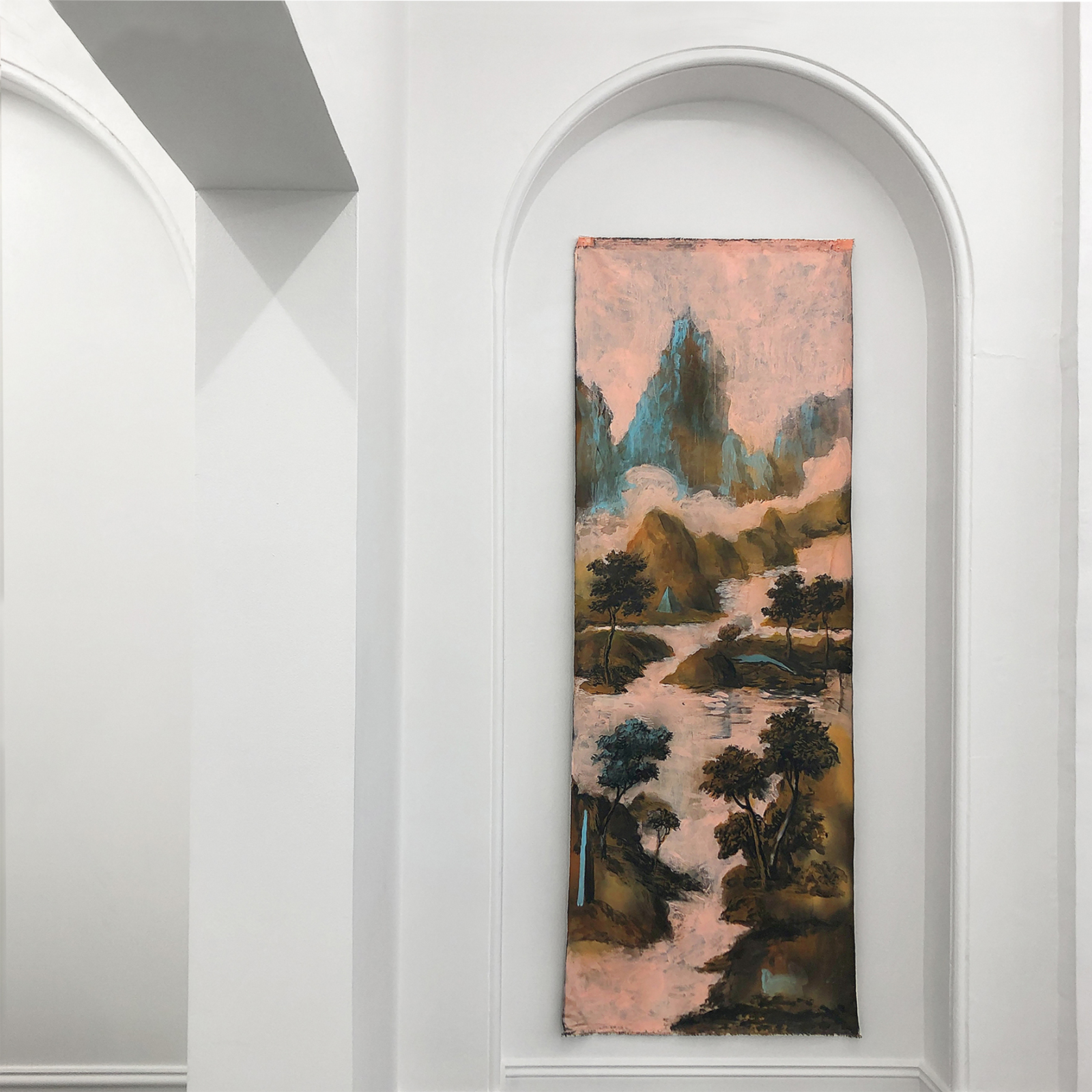

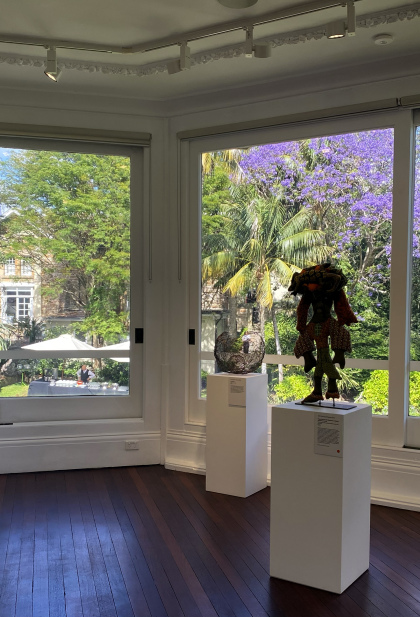
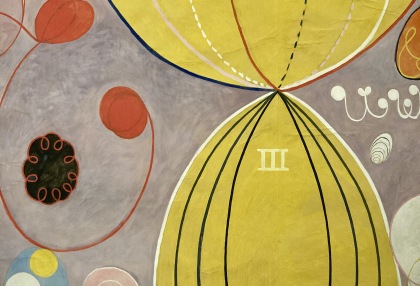
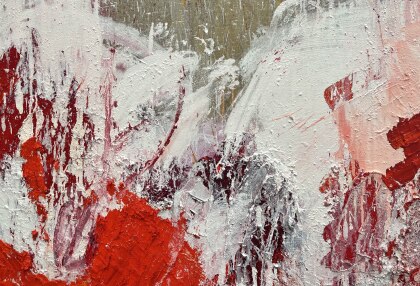
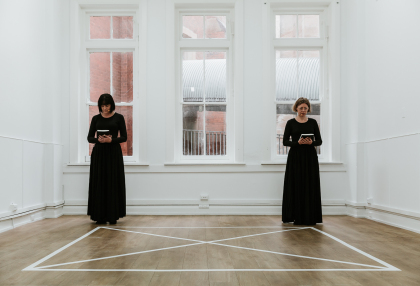
No Comments